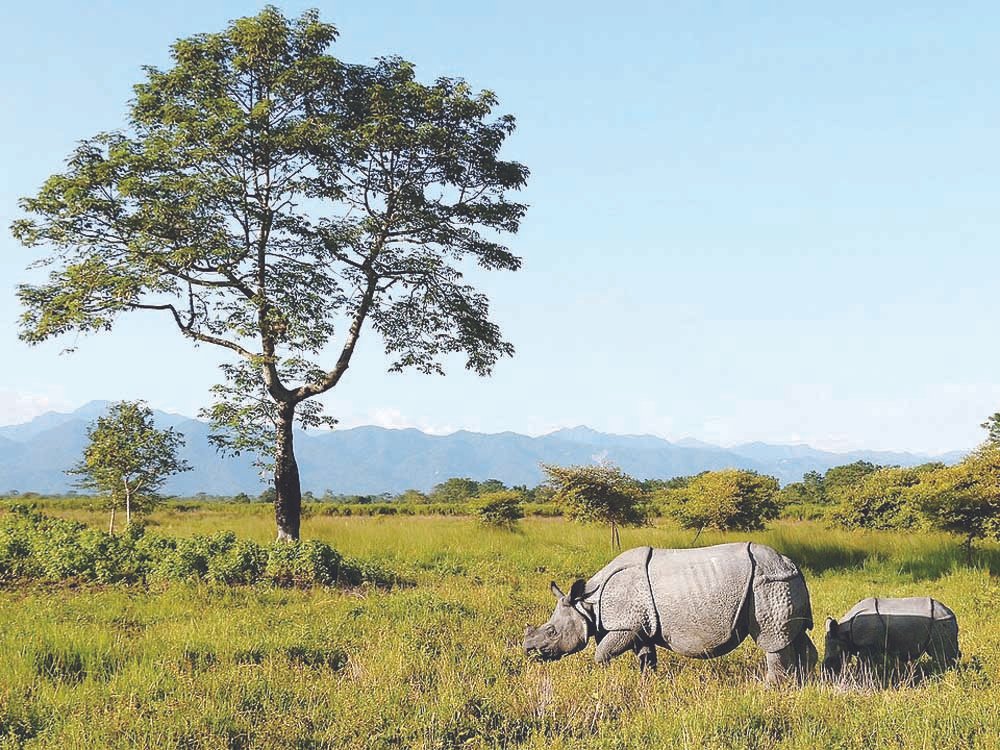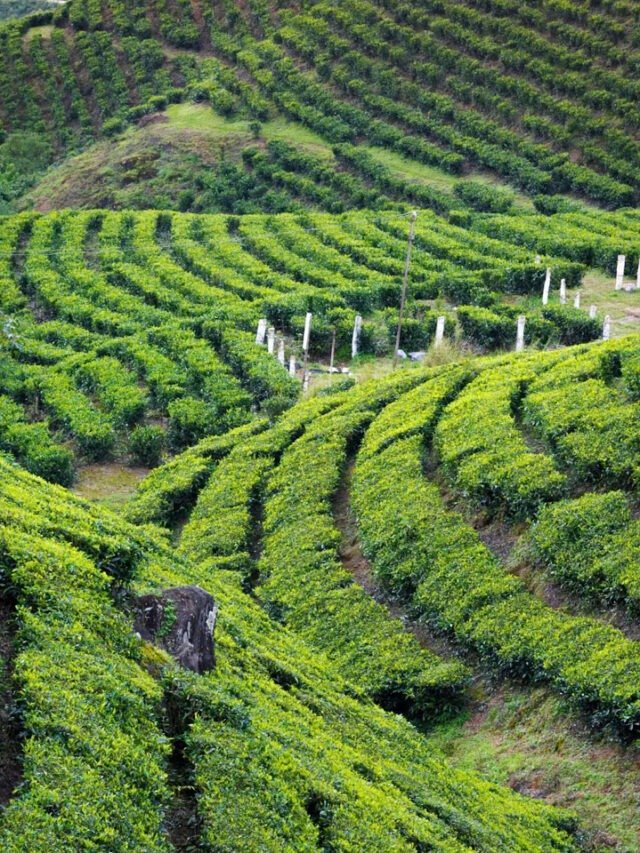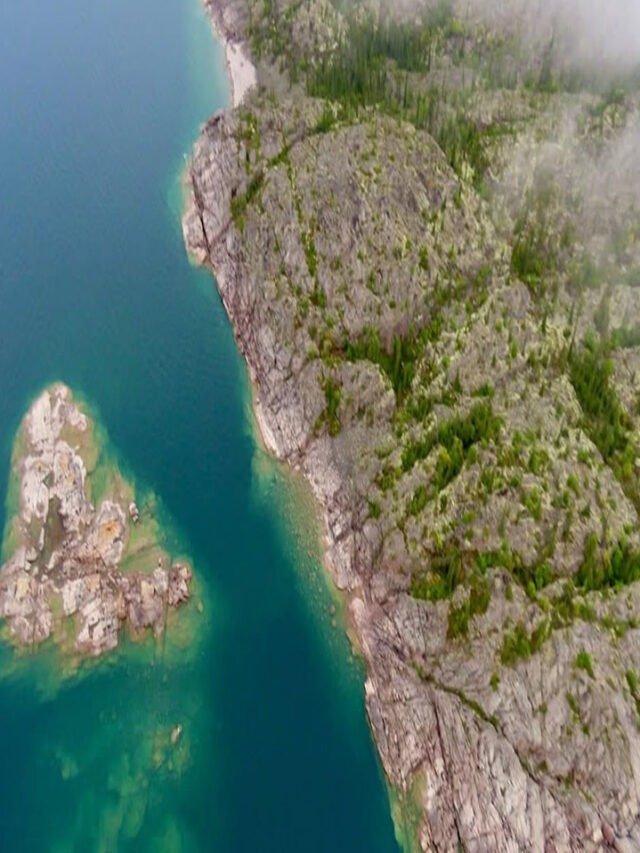GUWAHATI, Sept 1: Grasslands in Assam’s Manas National Park and Tiger Reserve have shrunk by nearly 50 per cent in the last three decades due to various factors, including climate change, officials said.
Manas National Park (MNP) and Tiger Reserve Field Director C Ramesh told PTI that grasslands paving the way for woodlands is a natural process that takes over 100 years but it has accelerated in the UNESCO World Heritage Site, forcing herbivorous animals to get concentrated in areas where grasses are available.
“We are witnessing that the grassland expanse is shrinking and woodlands are increasing. That’s a part of succession, but it is happening very rapidly, and that is a cause of concern for us as grasslands are crucial for the ecosystem,” he said.
“As per our records, we have lost almost 50-60 per cent of our grasslands in the last 30-35 years,” he added.
Ramesh stated that the trees and shrubs that are replacing grasslands are of native species. With woodlands replacing the grasslands, animals are getting concentrated in areas that have grass.
“Non-territorial animals such as deer roam around the park to feed on grass. Now, they are getting concentrated in available grasslands,” Ramesh said.
The grasslands of the national park are unique from a biodiversity point of view as it is the only place in the world where greater one-horned rhino, swamp deer, hog deer, pygmy hog, hispid hare, wild buffalo, Bengal florican, tiger and elephant co-exist in the same habitat.
Speaking about the crisis, eminent conservationist and grassland expert Bibhuti Prasad Lahkar told PTI that the grasslands are affected in two ways — biotic and abiotic or anthropogenic.
“In the biotic process, a grassland gradually converts into scrubland with the spreading of invasive species, and becomes woodland by succession. Climate change accelerates the spread of invasive species,” he added.
The anthropogenic pattern means affecting the grassland through livestock grazing, uncontrolled burning and grass cutting for various purposes.
Lahkar said that the diversity of grasses has also been declining over the years.
“Different animals depend on different types of grasses. So, if a particular species of grass decreases, then the animals dependent on that grass will also gradually vanish from the park,” he added.
Lahkar said that flood plays a key role in maintenance and management of the sub-Himalayan grassland to a large extent, but areas like MNP usually do not experience continuous flooding, and if it occurs, it typically lasts for only a few hours.
“Moreover, nowadays, we are seeing very erratic rainfall. This is gradually impacting the dynamics of the grassland, including changes in the soil composition,” he added.
Lahkar said very little emphasis is given in Assam on developing habitats as the primary focus is still on developing infrastructure and combating poaching.
Echoing similar views, Gauhati University Assistant Professor (Environmental Science) Minakshi Bora said climate change is responsible for altering MNP’s grassland community, enabling invasive species like Chromolaena odorata and Mikania micrantha to thrive.
“These species outcompete native vegetation, reducing biodiversity and altering ecosystem processes. Effective conservation efforts are crucial to mitigate the impacts of invasive species and protect the park’s unique biodiversity,” she added.
Bora said that rising temperatures and declining precipitation have disrupted the hydrological cycle in the Manas River Basin.
“Data from recent studies indicate a gradual decline in the frequency of rainfall, resulting in reduced summer water flows and increased potential evapotranspiration.
“These factors lead to altered river discharge, frequent droughts and declining water quality, which are directly putting stress on the grassland ecosystems, which we know as the backbone of MNP,” she added.
Additionally, flash floods, intensified by melting Himalayan glaciers and increased sediment loads, are causing significant damage to grassland vegetation and leading to wildlife mortality, Bora stressed.
“Moreover, the drying up of adjacent wetlands and marshes is further reducing soil moisture and humidity in the basin, both essential for healthy grass growth and habitat stability.
“While grasslands globally face productivity declines and biodiversity shifts from climate change, Manas grasslands are particularly at risk from hydrological disruptions and invasions, threatening their role as a biodiversity hotspot. Conservation efforts must prioritise adaptive management to mitigate these effects,” she added.
Ramesh, however, said that no study has been conducted on the impact of climate change in the forest, and there is no weather station inside the national park, which is why it is difficult to analyse the change of temperature or rainfall pattern inside the jungle over the years.
In a bid to arrest the decline, the park authorities, in collaboration with several NGOs, have prepared a 10-year ‘Grassland Management Action Plan’ (GMAP) to conserve and restore the habitat.
“Invasion by alien species, natural succession of grasslands into woodlands and degradation of water bodies are some of the emerging concerns for the park management,” a document prepared by GMAP stated. (PTI)












